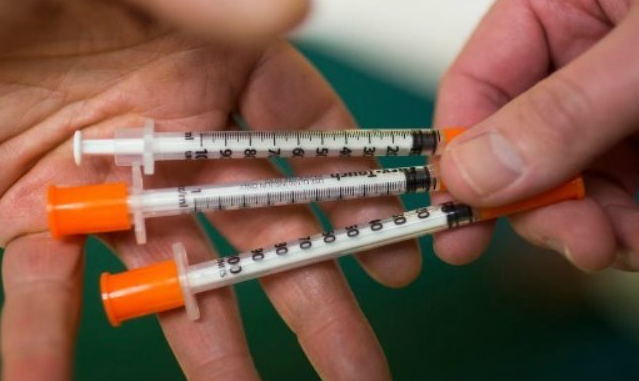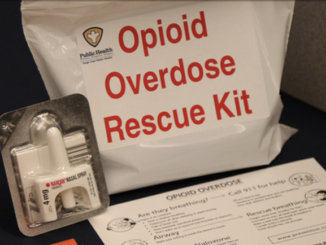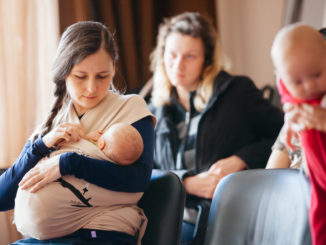
A year ago, we published an article in which I expressed skepticism and displeasure with North Dakota’s needle exchange program. The program came into being as a result of the 2017 Legislative Session’s Senate Bill 2320. The basic premise behind the law is to reduce the spread of disease – like HIV and hepatitis – in North Dakota due to the rise of IV drug use. Quite simply, the program allows for drug users to exchange potentially contaminated needles for clean ones without the threat of being apprehended by law enforcement (the law prohibits law enforcement from doing so).
As I explained a year ago, many would be led to believe that a “needle exchange program” would be carried out on a “one-for-one” basis. But that’s simply not the case. Even the North Dakota Department of Health’s Biannual Reports for January – June and July – December of 2018 prove this.
Let’s take a look at the numbers:
January – June 2018
Number of Programs – 2 (Mandan and Fargo)
Number of Individuals Served – 118
Number of Clients Requesting/Receiving Treatment Services – 11
Number of Syringes Distributed – 7,609
Number of Syringes Collected – 2,986
July – December 2018
Number of Programs – 3 (Mandan, Fargo, and Minot)
Number of Individuals Served – 350
Number of Clients Requesting/Receiving Treatment Services – 35
Number of Syringes Distributed – 48,612
Number of Syringes Collected – 21,417
Based off of the North Dakota Department of Health’s own website, the “primary objectives” of the “Syringe Service Programs” are two-fold:
- “Provide a clean syringe for each injection instance to reduce the potential for transmission of HIV, hepatitis B and C, and other blood-borne pathogens.”
- “Provide an entry point for substance abuse treatment and care and other resources as appropriate to the individual.”
On the surface, this might sound good to some. But what are the measurements in terms of outcomes that determine whether the program is a success? In my opinion, I think it can be argued that the program is not only highly questionable at best, but largely a failure at worst.
When we analyze the data in relation to the objective of providing a “clean syringe for each injection”, the results are unimpressive. While 56,221 syringes were distributed in 2018, just 24,403 were collected. That means that 69.7% more were doled out than were turned in.
As I wrote a year ago:
“What is there to guarantee that these syringes – given with the intent to reduce sharing – aren’t actually being shared themselves? What is there to ensure that the needles aren’t being left to lay in areas where they could be a hazard to others? Could more syringes go out than are being returned? Is it possible that the state is funding something that actually encourages sharing of needles and causes hazards in some situations?” (Emphasis Added)
As I already pointed out, we obviously have the data now to prove that more syringes are going out than returning. But what about the other questions? I think it’s reasonable to ask them too.
In addition to this, when we look at the data for the program being “an entry point for substance abuse treatment and care”, we again find the results unimpressive. Of the 468 individuals served in 2018, just 46 of them “requested and received referral to substance abuse treatment services.” That’s only about 10%. And we’re left to wonder how many of the 10% actually found success in their treatment?
As is typical of government, they don’t seem to be deterred by their own lackluster data. In fact, quite the opposite. Today, the North Dakota House passed Senate Bill 2198 on a vote of 58-32. This bill makes some clarifications to existing law in terms of collaborative language between the Department of Health and Department of Human Services. It also adds language to ensure that those collecting the needles cannot be stopped, searched, or seized for “possession of a controlled substance”, since these needles have drug residue on them.
In advocating for passage of SB 2198, I don’t think Rep. Gretchen Dobervich (D – District 11) was exactly honest in her portrayal of the success of the program. Either that or she’s unaware of the aforementioned data or has a far different view of what success means.
For example, Rep. Dobervich told her House colleagues that needle exchange programs are a “successful point of entry” for treatment and recovery programs. But are they? The aforementioned numbers seem to indicate otherwise. Dobervich also claimed that these programs “keep used needles off streets, out of parks and playgrounds”. Really? Again, with 69.7% more syringes doled out than turned in, how can she make such a claim?
I also found it interesting that Rep. Dobervich mentioned that these programs aren’t funded with General Fund dollars. Does that somehow make them okay? What difference does it make which fund they come out of? Isn’t the source the same— the taxpayer?
I again ask some other questions that I first put forth a year ago:
“If the state is going to get into the business of providing the necessary supplies for drug use – in the name of safety – then how far will it go? What’s next? Should the state be responsible for ensuring the highest quality of drug possible? Should the state provide the drug itself? After all, this would reduce risks, right?”
These are serious questions. Are we going the way of places like Massachusetts and New Jersey who are currently considering “injection sites” as a means of supervising drug users and in “an effort to reduce the risk of death and disease”?
I stand by what I’ve written before. It’s simply not the proper role of government to be in the business of providing drug users with the supplies they need to do drugs— not even if it’s done in the name of compassion or public health.
People can paint this issue however they want. But it doesn’t change the reality that our tax dollars are being used to subsidize drug use. And that’s completely unacceptable.
PLEASE LIKE & SHARE!
Sources:
- https://theminutemanblog.com/2018/02/27/nds-needle-exchange-program-enabling-drug-use-good-policy/
- https://www.legis.nd.gov/assembly/65-2017/bill-index/bi2320.html
- https://www.ndhealth.gov/hiv/Docs/SEP/North%20Dakota%20Syringe%20Service%20Program_01012018_06302018%20Biannual%20Report.pdf
- https://www.ndhealth.gov/hiv/Docs/SEP/NDDOH.SSP.2018H2.REPORT.pdf
- https://www.legis.nd.gov/assembly/66-2019/bill-index/bi2198.html
- https://www.wbur.org/commonhealth/2019/02/26/opioid-crisis-supervised-injection-sites-harm-reduction-report
- https://whyy.org/articles/n-j-considering-supervised-injection-sites-to-blunt-impact-of-opioid-epidemic/





